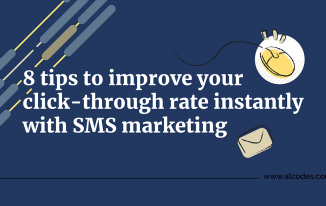About your E-commerce website’s products and services when it comes to answering potential customers’ queries, an FAQ page can be a valuable asset. It is important to tell them about your brand and support your marketing and SEO efforts. The challenge then is to create an FAQ page that customers will find useful and highly informative.
Here are 9 tips for creating a successful FAQ page.
Write your FAQ page in an informal style
On your FAQ page, connecting with your customers and potential customers is just as important as it is throughout the rest of your E-commerce site. If you want to build this connection quickly when replying to questions, try writing the questions and their answers in an informal style. It means using language (sometimes including slang) that your target audience use, and writing in a simple and easily accessible style. By writing informally and simply, you make your answers more enjoyable and understanding, for your E-commerce website visitors to read.
Include graphics on your FAQ page
Most of the time, FAQ page is considered the simplest page of an E-commerce website. However, a creative web design which includes graphics can increase appeal as well as the usefulness of the page. For instance, images and videos can simplify queries which are hard to explain in writing, while a clear design can make it easier for people to find questions and related answers that they need. A valuable FAQ page, for yourE-commerce site, must consist of a clear and thorough discussion of the questions which are very important to customers and potential customers. By following a few simple steps, you can create an FAQ page that is vibrant, attractive, and useful part of your E-commerce website.
Establish your FAQs so they are informal to search
If you have numerous FAQs, pay singular care to how you shape them on your site. The very first thing to consider is to categorize your questions by audience type, difficult questions may be unsuitable for beginners on an FAQ page, but simple and straightforward questions are definite candidates. There’s nothing more frustrating than having to search through a haystack of questions for the needle of answers so list the questions alphabetically. Group your FAQ by questions types, and give each group a heading. This will help your customers to find information faster.
Include social proofs on your FAQ page
On an E-commerce website, an FAQ page is an opportunity to build trust with customers and potential customers by simply providing them with the information they required to make decisions about your product and services. To build that trust more effectively, it can be helpful and useful to include social proof on the FAQ pages. Social proof includes logos from customers, testimonials from satisfied clients, and information about who provides security for your payment services. This information gives assurance to your visitor that your business can safely and successfully provide them with the product and services they need.
Make it interactive
On your site, the FAQ page is no different from any other section, it must look appealing while being clear and interesting to the eye. Only because there is text mention on the page, it doesn’t mean that it can’t be trendy. With the FAQ app, you can add images and videos to simply make it an interactive experience for your customers. You can choose from expandable layouts or a classic one. In addition, it is also an important element to consider which design fits your content best. If you want to differentiate between the questions, you can also design them differently. Make sure to space things up with bullet points or numbers so that the content is easy, breezy to read when writing each answer.
Keep it customer-focused
The key to a great website is to keep it customer focused. In FAQs, brands can be accused of including biased and irrelevant information, often using it as an extension or in place of an ‘About us’ page. Though, it is vital that questions are as relevant to the customer’s needs and possible, as well as answered within a positive or solution-based framework. This approach helps to solve current problems and can also be used to encourage the path to purchase. For example, if a user is not sure about the brand, an authorized and well-executed FAQ page can be enough to reassure and motivate them to stay on-site for longer.
Create landing pages
A simple way to improve search engine value on your FAQ page is to create landing pages for important questions. This can especially be important for a long-tail search such as when the user searches for an entire question. If you create an individual landing page for your site, Google will link your site to the related Google searches. This is a great news for everyone.
Leave room for feedback
After you have published the life-changing FAQ page, there is a little chance that some of the users won’t find the answers they were basically looking for. In order to keep your customers happy and pleased, it is necessary that you offer users a way to contact you or leave some kind of feedback. It can be an email address, or a link to your ‘contact us’ page, or any other method which will allow them to ask new questions, or ask for extended suggestions or reasons to improve your FAQ page.
Final words
Customers love it when they can easily find what they are looking for. Keep in mind that ‘FAQ’ is a general name for the type of question that answers real questions and guide users. Most of the users have had trouble on other website and are looking for an exact answer so design it in a way that actually helps them.
Author bio
Jennifer Gomez is an owner of web development company California with a skilled set of including content management, information architecture, business analysis and website designing. She operates website design, helping clients analyze their business requirements. She enjoys teaching her clients website designing and online marketing.




